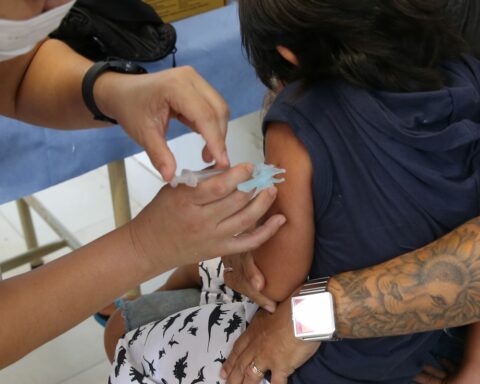Worldwide, one in every hundred births has congenital heart disease, according to the American Heart Association, reaching 1.35 million patients per year. Prenatal care and early diagnosis are essential for the proper treatment of babies with the problem.
According to the academic director of the Brazilian School of Medicine (Ebramed), Leonardo Jorge Cordeiro, congenital heart disease is a malformation or incomplete formation of the heart and circulatory system, which can occur in the first eight weeks of pregnancy, the stage of embryonic cardiac development.
“With the complexity of the cardiocirculatory system, the changes can be the most diverse, as they can be caused by the erratic formation or even non-development of both heart cavities, such as problems in valves, veins and arteries related to the heart”, he explained.
Congenital heart diseases are divided into cyanotic and acyanotic. As with other types of heart disease, there are different degrees of involvement. Just as there are different types of treatments, procedures and surgeries. To find out if a baby already develops the problem, the diagnosis is made by a transthoracic echocardiogram, with color Doppler, preferably by a doctor specializing in congenital pathologies.
A baby’s heart is already fully formed around 20 weeks of pregnancy, when prenatal morphological ultrasound is usually performed. According to the cardiologist, societies linked to obstetrics and pediatric and congenital cardiology are in favor of performing fetal echocardiography, that is, with the child inside the uterus, routinely in pregnancies in general, even when there is no strong suspicion of problems. heart during morphological ultrasound.
Factors
According to Cordeiro, there is no specific factor associated with the development of congenital heart disease. There are factors that increase the chance of cardiac development problems, such as chronic maternal diseases such as diabetes mellitus and systemic lupus erythematosus, as well as rubella infection, can affect the development of the fetal heart in these first eight weeks of the fetus. Also medications such as lithium, certain anticonvulsants and even illicit drugs can lead to malformations.
Twin pregnancy and in vitro fertilization are also considered risk factors. In addition to these conditions, a history of previous congenital heart disease or in first-degree relatives, are also shown as factors for a higher incidence of heart changes in babies.
According to a specialist, any heart disease that is diagnosed later, and is not related to the embryonic development of the heart, is called acquired heart disease.
Treatment
Symptoms can be divided according to the manifestation of the disease in the baby. In cases of newborns, there is difficulty in breastfeeding, tiredness, racing heart, excessive sweating in the head and feet. In the first year of life, there is difficulty in gaining weight, problems with growth and the appearance of a heart murmur, cyanosis (when the child looks purple), fainting, chest pain and palpitations.
For treatment, there may be no need for surgical intervention, or even need three or more surgeries to correct the patient’s blood flows. In addition, there is a possibility that the surgeries are curative, that is, they reestablish the usual cardiac system, leading to the individual’s cure, or palliative.
“The life of a congenital heart disease patient depends both on the diagnosis of the type of heart disease and on the early diagnosis and treatment performed. There are some conditions that don’t even need surgery, so life goes on completely normal, but we also have cases of very complex heart diseases that were diagnosed early and underwent all the necessary procedures at the appropriate times”, explained the cardiologist.
Panorama
According to the World Health Organization (WHO), about 130 million children in the world have some type of congenital heart disease. In Brazil, according to the Ministry of Health, about 29,000 children are born with congenital heart disease each year – of these, about 23,000 will need surgery to treat the problem. In the South and Southeast regions, approximately 80% of children with heart disease are diagnosed and treated. The scenario in the North and Northeast is the opposite, in which up to 80% of these children cannot be diagnosed or treated.
In many cases, families only identify that the baby has a heart problem after birth, when the little heart test is performed. Performed in the first days of life, still in the maternity ward, the exam is performed with an oximeter, which measures the level of oxygen in the baby’s blood and its heartbeat. The test is low-cost, fast, non-invasive, painless and mandatory, offered by the Unified Health System (SUS).









